Without further ado, let’s dig in!
9 exciting app design trends for 2022. These trends consist of colorful data visualization, multi-directional navigation, limitless imagery, and more. Apps are evolving in unconventional ways, which is nothing short of what you’d expect with how atypical the past two years were.
9 app design trends to look forward to in 2022:
- Limitless imagery
- Asymmetric menus and galleries
- Borders define features
- Abstract spherical patterns
- Unconventional text alignment
- Multi-directional navigation
- Brutalist app design
- Layered sheer screens
- Super apps
1. Limitless imagery
The imagery we see on apps, such as product shots, are designed to be viewed on a minute scale. So how can they possibly feel limitless?
To accommodate smaller screens on smartphones and tablets, apps allow various ways to interact with imagery: animations, panning, and zoom. For ecommerce and retail apps, products no longer need to be contained within a square or rectangle. Instead, they appear boundless and merge with the background as if they’re floating amongst other design elements of the app. This offers the user a much more cohesive experience when using the app and unifies the app design.

Design by Jagadish Ramesh, via Behance.
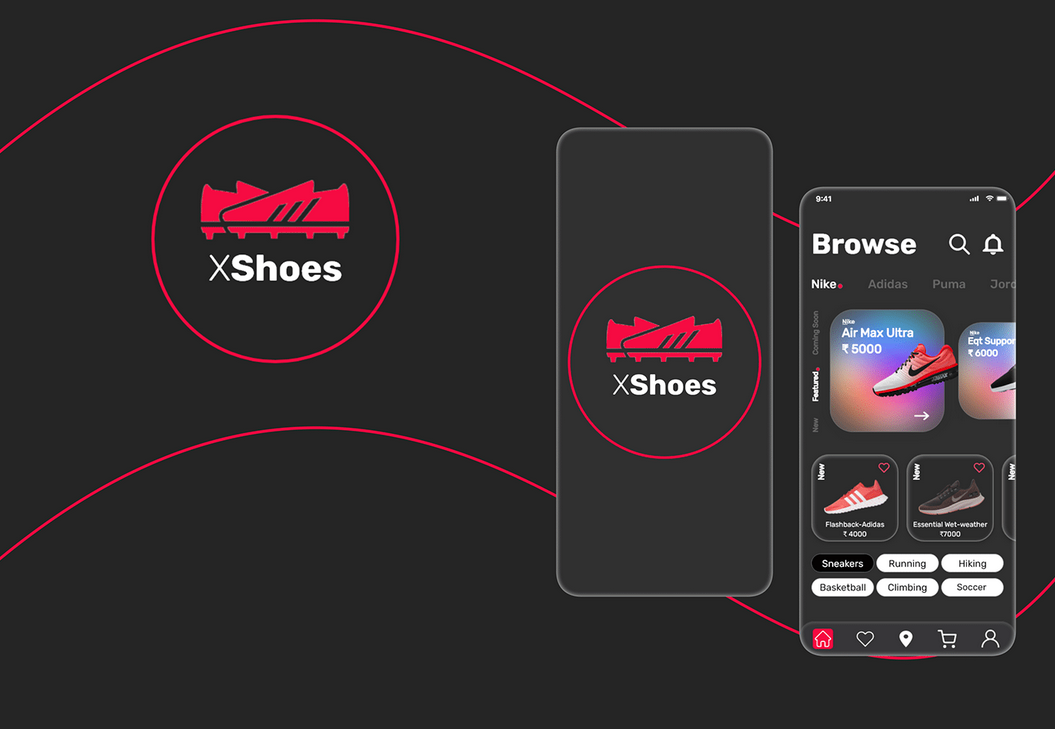
Mockup by Abhishek Tomar, via Behance.
This style of imagery is often shown partially or cropped to show more detail. And if you want to go one step further, you could combine this style choice with varying layers of interactivity. You could, for instance, use augmented reality in an ecommerce app selling furniture or houseware to enable users to envisage how products would look in their homes.
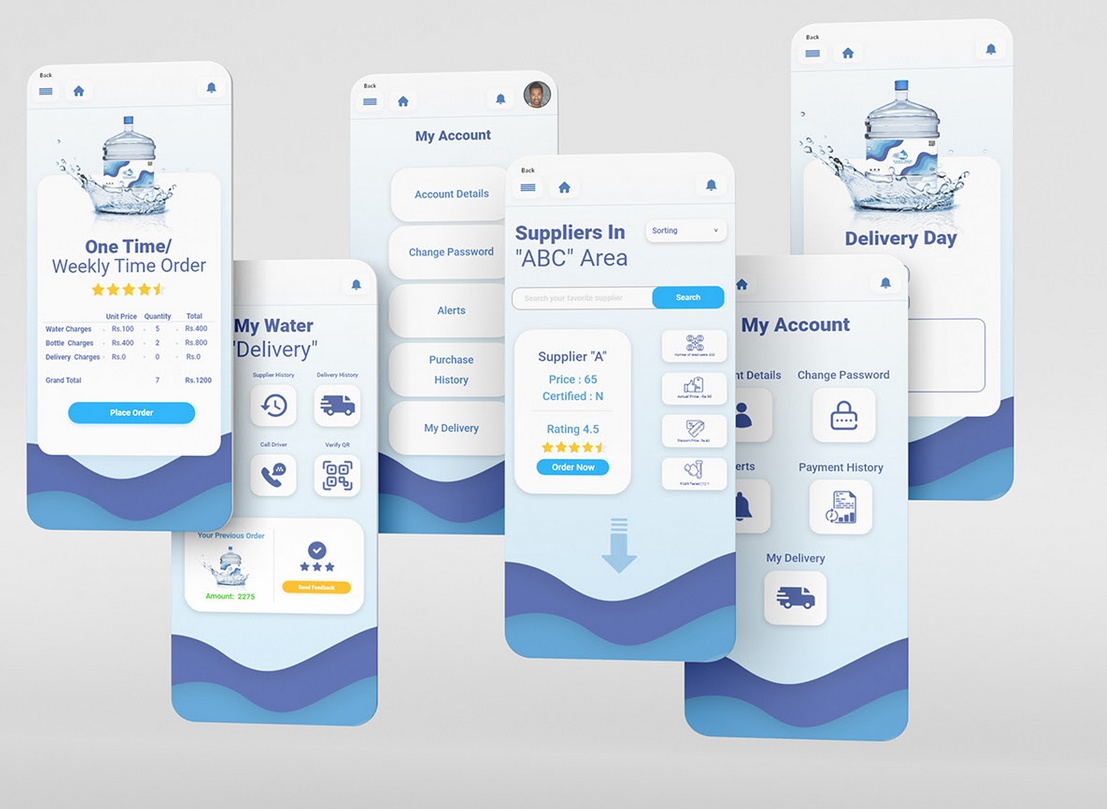
Design by Urooj Mughal, via Behance.

Intricate image crops, by Sajon for Orix Agency, via Dribbble.

App design by Lition
2. Asymmetric menus and galleries
Using asymmetry in design and layout creates focus around certain elements within an app. Oftentimes people’s eyes move a certain direction when processing visual information and creating asymmetrical design can flow with the audience’s visual flow. In 2022, we are seeing designers flex their innovation muscles to avoid the polished feel of symmetrical apps, especially for apps with multiproduct galleries, such as ecommerce apps.

Design mockup of asymmetrical fashion ecommerce app, by Taras Migulko via Dribbble.

Mockup for Nike Shoe Store by Firuza Ibrahimova via Behance.
Using asymmetrical design can help strengthen your brand’s unique identity and bring a fresh and fun take on your menu or gallery. It captures the attention of your audience through the disruption of patterns and offers something different in design from the norm.

Design by Sajon Islam, Redwan Ahmed and Abdur Rahman Rayhan via Behance

Asymmetrical gallery, by Si Thu A.

Asymmetrical designs make longer lasting impressions. Design by Sajon for Orix Agency via Dribbble.
3. Borders define features
Borders help organize information in app design. In adding a simple stroke around each element, borders act as separators to establish a hierarchical structure to guide the viewer. They mark out space for each header, image or button, allowing them to breathe.

Brimming with borders: app design by Ksenia Zlotnikova, via Behance.

By Lucía Vega and Luciana Almada, via Behance.
Borders are also pretty old school. In computing, earlier GUIs such as Apple’s Macintosh System 6 (released 1988) and Microsoft Windows 3.1 (released 1992) used borders relentlessly to visually separate elements, such as scroll arrows, buttons, and windows. By subtly referencing this period of early digital design, many apps are connecting to users through nostalgic undertones.
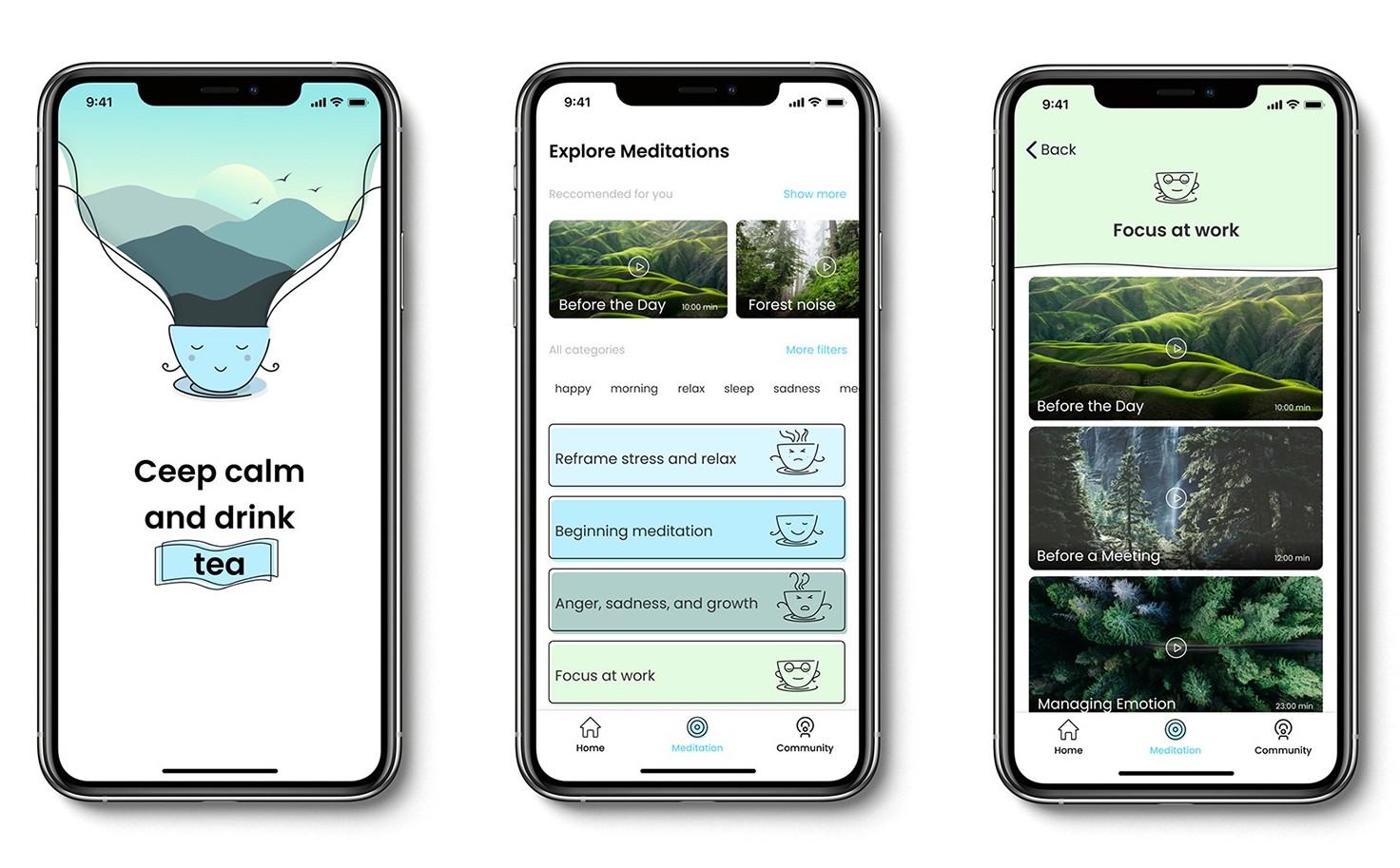
App design by Viktoria Horbach

Flat design and strokes visually organize elements, by Ajay Shekhawat, via Dribbble.

App design by Ghulam Rasool, via Dribbble.
4. Abstract spherical patterns
Circular and spherical patterns are omnipresent. From eggs to planets to domes, these shapes are ubiquitous in both natural and artificial objects. Part of their appeal is their fluidity and when used in digital design, circles are known to give designs an inviting, soft experience.

An enlightening e-reader app design, by Mehvish Iqbal via Behance.
In 2022, we see app designs take this preference for rounded shapes a leap further. Many are incorporating circles into imagery and backgrounds. They lean into the abstract, quirky and nostalgic themes of the 1980s’ style Memphis Design by contrasting circles with zigzags and bright colorways.
You can play around with abstract circular patterns to create depth in backgrounds and add brand personality to your app. Another option is to animate your spherical designs to signify changes of state in the user journey or indicate progress during a task flow.

Colorful onboarding animation using spheres, by Gregory Riaguzov for Cuberto, via Dribbble.

By Ghulam Rasool via Dribbble

By Layo via Dribbble
5. Unconventional text alignment
Another app design trend that will be buzzing its way across 2022 experiments with the layout of copy. For those targeting audiences who read left-to-right, designers are creating unconventional designs that feature vertically and diagonally aligned text. Challenging the way users traditionally experience text in app designs, designers are using copy to blend into the other elements of the app, such as its imagery as you can see in the below-left example.
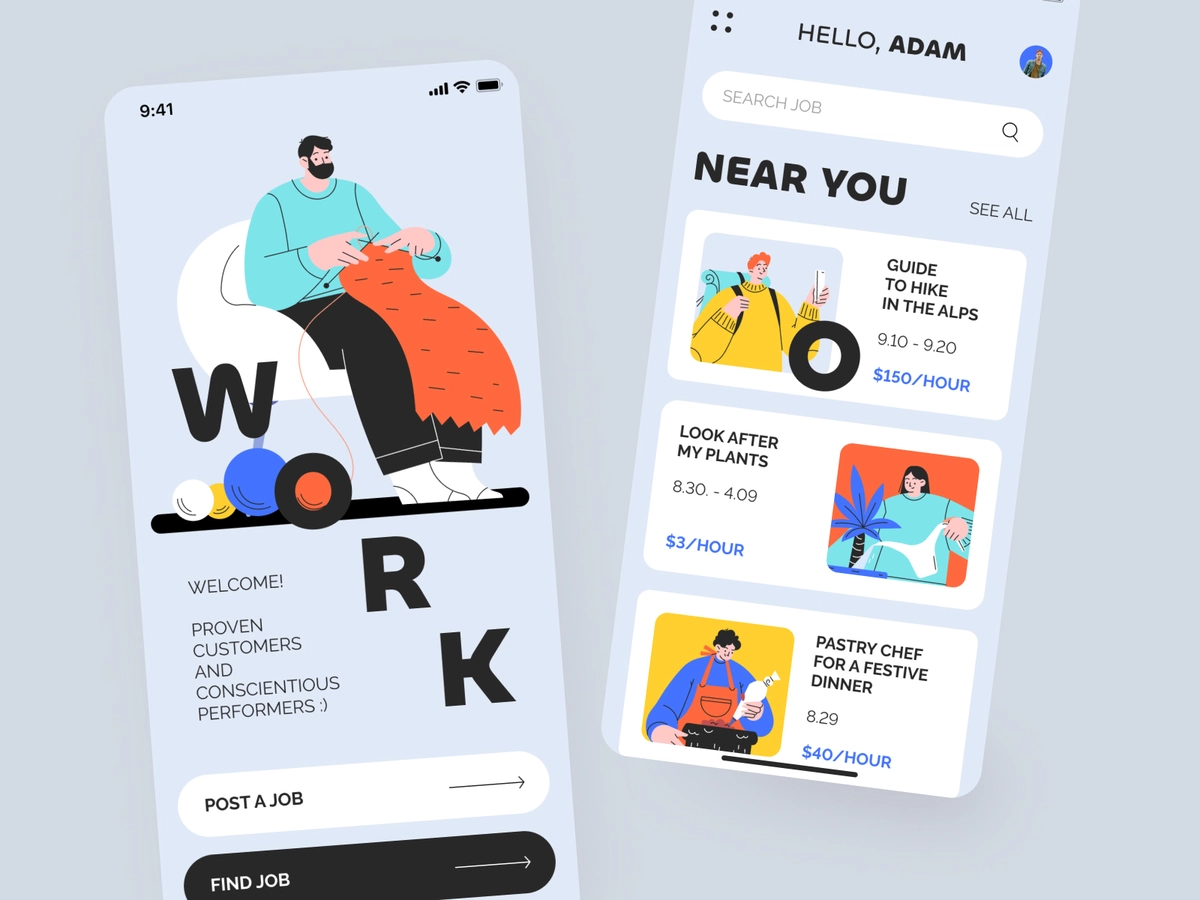
App design by Taras Migulko, via Dribbble
With unusual text alignment usually comes experimentation with spacing, case and font. Take the below lefthand example, which celebrates the space probe Voyager 1’s entry into space back in 1977. It uses tactics such as these to immerse the user in its orbit, invigorating the feeling of being in space through its thematic text alignment and use of symbols.

Unique use of tracking, via A Message from Earth.

Unorthodox, yet fun way to display texApp design by Lucía Vega and Luciana Almada, via Behance.
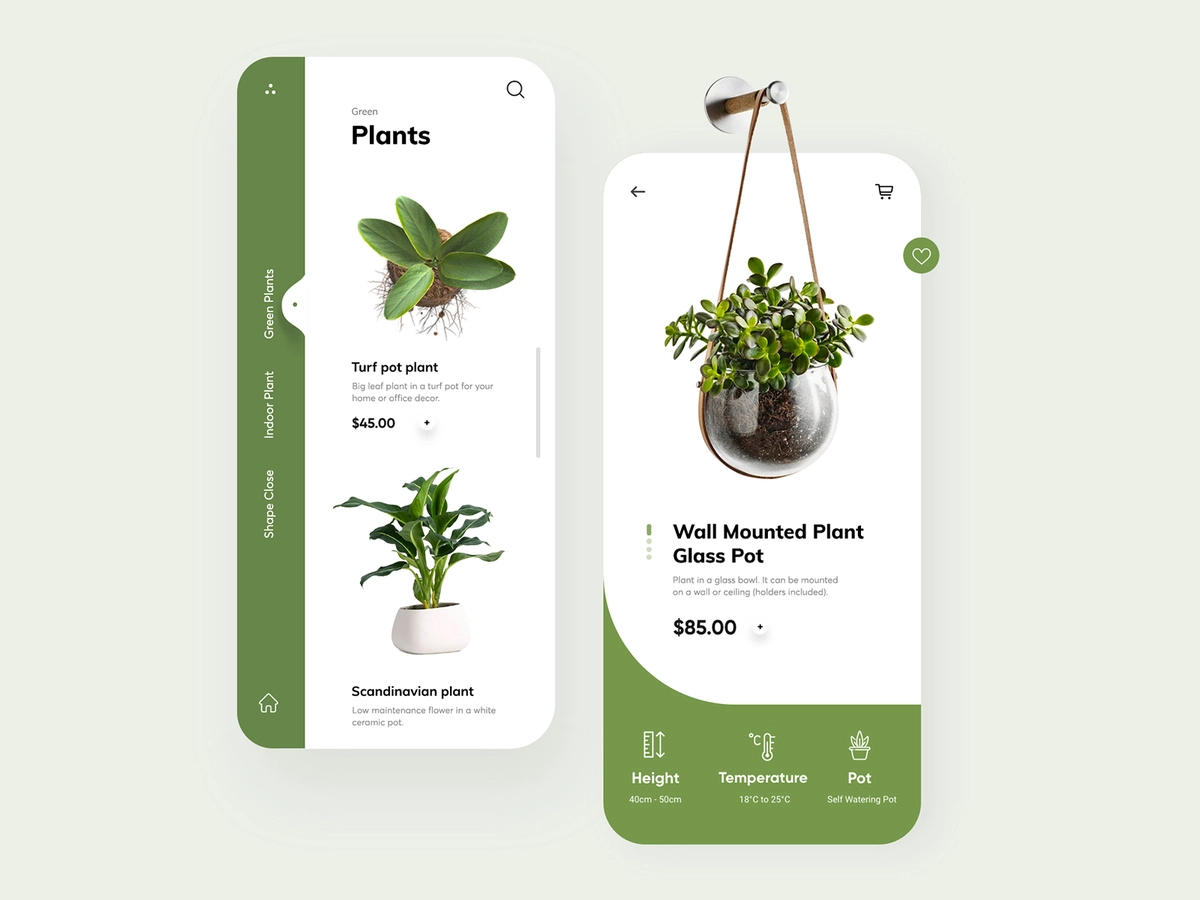
Mockups that use vertical text as navigation, by Ghulam Rasool, via Dribbble.
6. Multi-directional navigation
The best apps and websites, in terms of usability, make using them feel intuitive. Multi-directional navigation is an intuitive way to simplify complex flows and interactions. Rather than simply scrolling up and down through features, these designs encourage users to interact with the app more consciously. Including horizontal sliders amidst vertical scrolling displays create a more interesting, memorable user journey.
It’s an especially popular trend for apps with multiple products or profiles. Those featuring podcasts, music or social media should springboard off this point to enrich content and allow the user to truly lose themselves in designs.

Instagram users scroll horizontally through stories and vertically for posts, via Mobbin.

Via Google Play Store

By Syful Islam for SylGraph, via Dribbble.
7. Brutalist app design

Brutalist app design mockup, by Gisela Chueca, via Behance.
We’ve so far seen unconventional text alignment and the return of Memphis Design; what’s notable is how both deviate from traditional design standards. Similarly, brutalism is making a triumphant return in a contemporary format: app design.
It’s a style known for being bold, forthright and raw and is used by all sorts of niche, alternative brands. Flat design, limited use of color, and large text embody brutalism’s disjointed aesthetic to stand out in a sea of conventionality: those who stray far from the norm will appreciate the return of brutalism across 2022.

By by Lucas Matheus and Neo/Saga via Behance

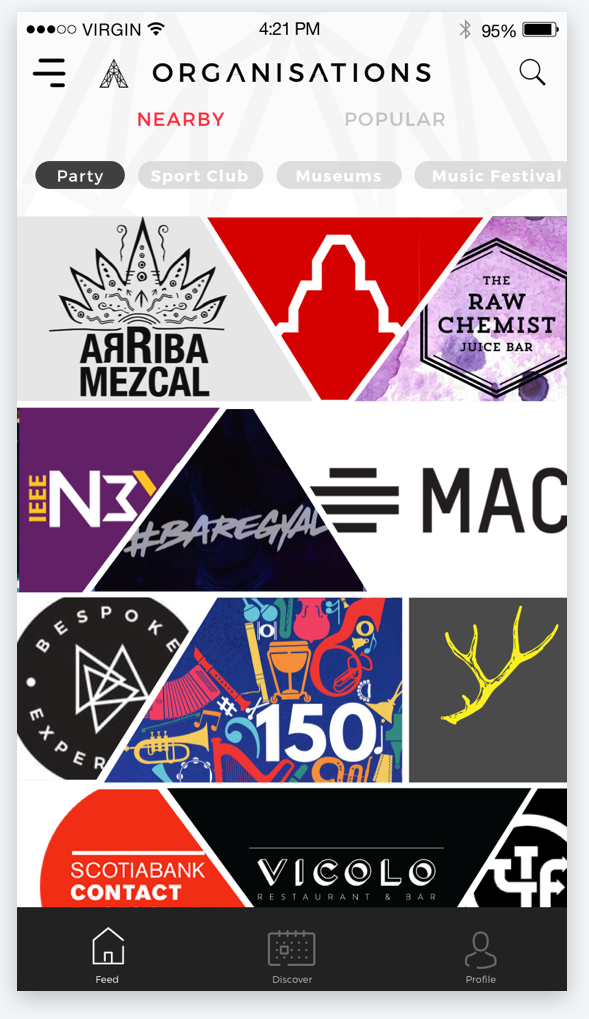
Brutalist app designs by astuaris
8. Layered sheer screens

Using drop shadows makes “New Arrivals” stand out, by Imran Hossen for Orizon: UI/UX Design Agency, via Dribbble.
The layering of sheer screens over other design elements involves using drop shadows or blur effects on buttons and text boxes to partially cover the background image. This technique creates a refreshing, warm aura while establishing page hierarchy, which is why it’s made it to our list of the top app design trends for 2022.

Buttons, elements, and text are all overlaid in front of the background image of this design, by Red Flood.
Adding a glow or drop shadow helps separate an element from the background and also dictates where the user’s focus should be. If you look at the image below-left, The Fabulous is a health wellness app widely utilizing overlays. Each overlaid text box has a drop shadow to prevent it from blending into the background image.
This effect is also used elsewhere, such as subtitling. Strokes, overlays, and blur effects are commonly used in subtitles for movies, television shows, and videos to make text easier to read. The layered sheer trend is not just a fashionable one, but also one which boosts readability and usability.

By Masiko.

Fabulous makes extensive use of layered sheer elements, via Mobbin.

Plenty of overlays in an app design by Andika Wiraputra for One Week Wonders, via Dribbble.
9. Super apps

WeChat contains many functionalities within one super app, via NNGroup.
Super Apps are mobile apps, which include multiple services within one app. These apps are very common in Asia and are heavily expanding in Africa. 2022 will see super apps become increasingly common throughout the globe.
Designers are approaching this all-in-one app experience with a medley of bright colors and cute, detailed iconography. Immersing users in games, shopping, social media and banking, these app designs need to convey how much they can offer without overwhelming. A clear structure, often in a simplistic grid format, with multi-directional navigation is key for organizing multi-product galleries of this extent.

Screenshot of Baidu app, which allows users to chat, shop, search, and much more.

ZaloPay is a Vietnamese superapp where users can book flights, check weather, and shop online, via ZaloPay [in Vietnamese language].
As pictured below-left, the Colombian company Rappi, is becoming more popular in Central and South America. It offers a single platform for individuals to shop, bank, and order food. Rappi even has a pharmacy section to manage medications and prescriptions. These superapps make exchanges and transactions easy, safe, and secure for both parties.

Rappi is an upcoming super app in Central and South America, via Agile Tech.

Paypal is expanding its business model by creating a superapp, via Tech Radar.
To sum up
Are you excited for the new app design trends in 2022? All 9 of these top app design trends of 2022 focus on improving the fun, usability, and overall experience. Whether you are browsing social media or managing your bank account, apps are becoming a routine part of our daily lives. New apps will feature many of these captivating trends. Please let us know your thoughts on these alluring trends and keep an eye out for them next year!

